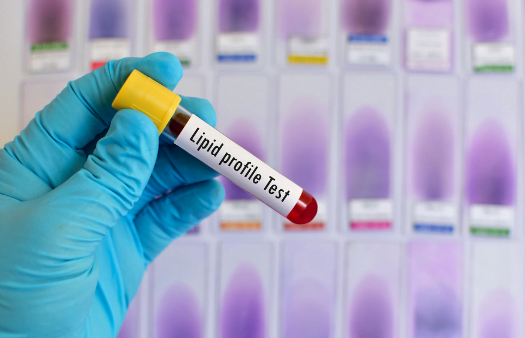Lipoprotein Electrophoresis Testing in Veterinary Samples
Understanding lipoproteins is crucial in veterinary medicine as it helps veterinarians diagnose and monitor various conditions affecting cardiovascular health. Lipoprotein electrophoresis testing in veterinary samples provides detailed insights into the composition of lipoproteins, which play a significant role in lipid transport within the body.
This test involves the separation of different types of lipoprotein particles based on their size, density, and electrical charge using an electric current. The primary lipoprotein classes detected include chylomicrons, very low-density lipoproteins (VLDL), intermediate-density lipoproteins (IDL), low-density lipoproteins (LDL), and high-density lipoproteins (HDL). Each class has distinct functions in lipid metabolism, transport, and storage.
The test is performed on blood serum samples collected from various species of animals. Proper specimen preparation is critical to ensure accurate results. The sample must be handled with care to avoid hemolysis and should be kept refrigerated until testing can be conducted. The process begins by collecting a small amount of blood, usually via venipuncture or capillary sampling.
The electrophoretic pattern obtained from this test is used to assess the overall lipid profile in animals, which is essential for diagnosing conditions like hyperlipidemia and evaluating treatment efficacy. This information aids veterinarians in formulating appropriate dietary recommendations and therapeutic interventions tailored to each individual animal's needs.
Accurate lipoprotein electrophoresis testing requires specialized equipment capable of separating these particles effectively. The use of high-quality reagents and precise methods ensures reliable results. It is important to note that this test should be conducted by laboratories accredited according to international standards such as ISO 17025.
The interpretation of the electrophoretic pattern involves comparing it against reference ranges specific to different animal species. These ranges are based on age, sex, breed, and health status. Understanding these nuances allows for more accurate diagnosis and treatment planning.
| Animal Species | Reference Range (mg/dL) |
|---|---|
| Cats | VLDL: 10-25, LDL: 30-60, HDL: 10-25 |
| Dogs | VLDL: 30-70, LDL: 80-120, HDL: 20-40 |
| Horses | VLDL: 40-90, LDL: 80-150, HDL: 30-60 |
Accurate and consistent results are vital for effective veterinary care. Regular calibration of equipment and adherence to strict quality control measures help maintain the accuracy and reliability of this test.
In conclusion, lipoprotein electrophoresis testing in veterinary samples is a valuable tool that provides detailed insights into lipid metabolism within animals. It plays an essential role in diagnosing and managing cardiovascular health issues.
Industry Applications
- Evaluating the efficacy of treatments for hyperlipidemia.
- Monitoring changes in lipid profiles over time to assess disease progression or response to therapy.
- Assisting in the diagnosis and management of various cardiovascular diseases.
The results from lipoprotein electrophoresis testing are used by veterinarians across different sectors including small animal practice, large animal medicine, zoo and wildlife health, and research institutions. These insights help improve patient outcomes through personalized care strategies.
Why Choose This Test
- Provides detailed information about the types of lipoproteins present in the sample.
- Offers precise measurements that can be used for long-term monitoring of lipid levels.
- Promotes early detection and intervention of cardiovascular diseases.
- Supports evidence-based decision-making regarding therapeutic options.
The accuracy and reliability of this test make it a preferred choice among professionals in veterinary medicine. It contributes significantly to the overall health management of animals by providing crucial diagnostic data.
Use Cases and Application Examples
- Evaluating the effectiveness of dietary changes in managing hyperlipidemia.
- Monitoring the progression of atherosclerosis over time in different animal species.
- Detecting early signs of lipid-related disorders in zoo animals to prevent potential health issues.
- Assessing the impact of environmental factors on cardiovascular health in domesticated pets.
In these scenarios, lipoprotein electrophoresis testing provides essential data that guides veterinary professionals in their diagnostic and therapeutic approaches. It is a cornerstone tool for maintaining animal health across diverse medical applications.





